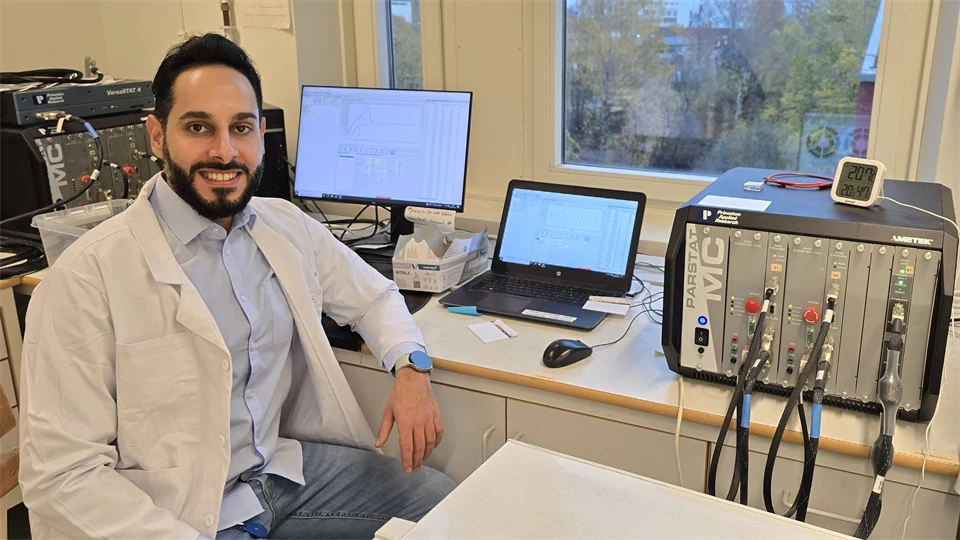Silicon could power the next generation of lithium‑ion batteries
By adding silicon to battery anodes, energy storage can be doubled or even tripled. PhD student Ali Abo Hamad at FSCN Research Centre has developed a sustainable method to make silicon suitable for next-generation batteries.
In his licentiate thesis “Green thermochemical modification of silicon microparticles for next-generation lithium-ion battery anodes,” he shows how silicon can dramatically increase battery performance when processed in an environmentally friendly way.
Since the 1990s, graphite has been the standard anode material for lithium-ion batteries - but it has a limited capacity. Silicon can store up to ten times more charge per gram, yet its practical use has been restricted because it tends to crack and lose performance after only a few charge cycles.
To address this, Ali has developed an environmentally friendly method to make silicon particles porous, allowing them to expand and contract without breaking. Instead of using hazardous acids containing hydrogen fluoride, he turns to urea, a common fertilizer. When heated together with silicon, urea decomposes into gases that can etch the surface, creating a porous structure.
“Urea allows us to make silicon porous in a simple, low-cost, and safe process. This is what makes it possible to use silicon in practical batteries,” Ali explains.
Two to three times higher capacity
The resulting porous silicon can be blended with graphite to form composite electrodes. Tests show that electrodes containing 10-20 percent porous silicon deliver capacities two to three times higher than pure graphite, while maintaining much greater stability than untreated silicon, which tends to lose performance rapidly.
Ali’s research demonstrates that silicon can significantly boost battery performance through a green and accessible process. The findings open the door to batteries that are more energy-dense, durable, and environmentally friendly.
“Even small amounts of silicon can double the battery capacity. My long-term goal is to understand how porosity affects stability - and eventually replace graphite completely with silicon,” he says.
Solving real-world problems
Ali’s fascination with materials science started early:
“As a child, I used to take batteries apart just to see what was inside.”
After completing a Master’s degree in Chemical Engineering at the University of Malaya in Malaysia, Ali received scholarship offers from several universities around the world. Around the same time, he was granted permanent residence in Sweden, which led him to move here. He later worked at Vesta Si, a company specializing in silicon and silicon nitride materials, managing lab operations while continuing his research. When a PhD position opened at Mid Sweden University, he applied and was accepted, allowing him to pursue his goal of becoming a researcher.
“In the future, I hope to work in a research and development environment, conducting experiments and solving real-world problems,” he says.
Licentiate seminar
On 28 November, Ali Abo Hamad will present his licentiate thesis “Green thermochemical modification of silicon microparticles for next-generation lithium-ion battery anodes.”
You are welcome to attend the seminar on Campus Sundsvall or join via Zoom.
